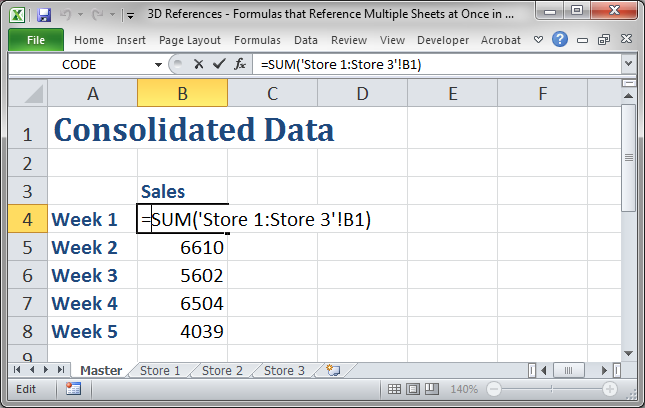5 Ways to Link Data Between Excel Sheets Easily

Understanding Excel Workbooks and Sheets

Before diving into linking data between Excel sheets, it's crucial to understand the structure of an Excel workbook. An Excel workbook can be thought of as a digital filing cabinet; it consists of one or more sheets, similar to folders within the cabinet. Each sheet acts as a single document, or page, where you can organize, analyze, and manipulate data.
Workbooks: This is the main file where all your sheets are stored. When you open an Excel file, you're opening a workbook.
Sheets: Within the workbook, these are individual tabs where you input your data. By default, a new workbook contains three sheets, but you can add more as needed.
Advantages of Linking Data Across Sheets

- Dynamic Updates: When you link data, any changes made in one sheet automatically reflect in all other sheets that reference it, ensuring your data remains current.
- Reduced Data Entry: Linking eliminates the need for duplicate entries, which not only saves time but also reduces the risk of errors from manual input.
- Improved Data Organization: Keep related data in separate sheets for clarity, yet easily reference or analyze combined data across these sheets.
- Efficiency in Analysis: By consolidating data from multiple sheets, you can perform complex analyses without the need to navigate between sheets manually.
Methods for Linking Data Between Sheets

1. Using Cell References

The simplest way to link data is by using cell references. This method allows you to use values from one sheet in another without copying or manually updating the data.
To create a cell reference:
- Go to the cell in the destination sheet where you want to display the linked data.
- Type the equal sign (=) to begin the formula.
- Navigate to the source sheet by clicking its tab.
- Click on the cell with the data you wish to link. Excel will automatically insert the sheet name and cell reference.
- Press Enter. The cell will now show the linked data and update dynamically if changes are made in the source sheet.
🔍 Note: You can use the sheet name directly in the formula, e.g., =Sheet2!A1 if you know the exact cell or range you need.
2. Using Named Ranges

Named Ranges make references more user-friendly and maintainable, especially for larger datasets:
- Select the range you want to name in the source sheet.
- Go to the Formulas tab, click 'Define Name', and give your range a meaningful name.
- In the destination sheet, you can now reference this range by its name, e.g.,
=SalesData.
🛠️ Note: Named ranges are dynamic; if you add new rows or columns to the range, Excel will update the references automatically.
3. Consolidate Data Using Functions

Excel offers functions like SUMIFS, VLOOKUP, and INDEX MATCH to pull and analyze data from multiple sheets.
- SUMIFS: Sum values based on multiple criteria across different sheets.
- VLOOKUP: Look up and retrieve data from a table on a different sheet.
- INDEX MATCH: A more versatile alternative to VLOOKUP, which can work with horizontal and vertical data and doesn’t require sorted data.
4. Data Validation for Dropdowns

Creating dropdown lists that pull data from another sheet helps ensure data integrity:
- Set up a list of options on your source sheet.
- Name this range for easy reference.
- On the destination sheet, go to Data > Data Validation > Settings.
- Choose List from the 'Allow' dropdown and enter the range (or named range) for your dropdown options.
✅ Note: Dropdowns populated from other sheets are especially useful for input forms where user input needs to be controlled.
5. 3D References

3D references allow you to reference the same cell or range across multiple sheets:
- Select the cell where you want to enter the formula.
- Use the formula
=SUM(Sheet1:Sheet3!A1)to sum cell A1 across sheets named Sheet1 through Sheet3.
This method is particularly useful for summarizing data or creating summary reports where each sheet represents a different period or category.
In summary, linking data between Excel sheets opens up a world of possibilities for organizing, analyzing, and reporting your data more efficiently. Whether you’re consolidating financial data, managing inventory, or tracking project progress, these methods provide the tools needed to keep your Excel workbooks dynamic and interconnected. By understanding these techniques, you can transform your Excel use from simple data entry to a powerful data management system.
What is the difference between linking data and copying data in Excel?

+
When you copy data, you create a static snapshot of the original data. Any changes in the source do not affect the copied data. However, when you link data, Excel creates a dynamic connection, meaning changes in the source sheet update the linked data automatically.
How do I ensure that my linked data updates correctly?

+
Ensure that you’re using relative or absolute references correctly based on your needs. Use absolute references (e.g., A1) if you want the link to always refer to that specific cell, regardless of where the formula is copied. Also, avoid moving or deleting sheets or data that are part of the link without updating the references.
Can I link data between different workbooks?

+
Yes, you can link data between different Excel workbooks. When linking between workbooks, you’ll need to provide the full path to the file in the formula, like =[Book1.xlsx]Sheet1!A1. Remember, both workbooks need to be open for Excel to update the linked data automatically.



